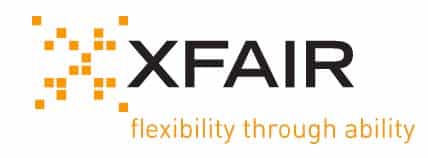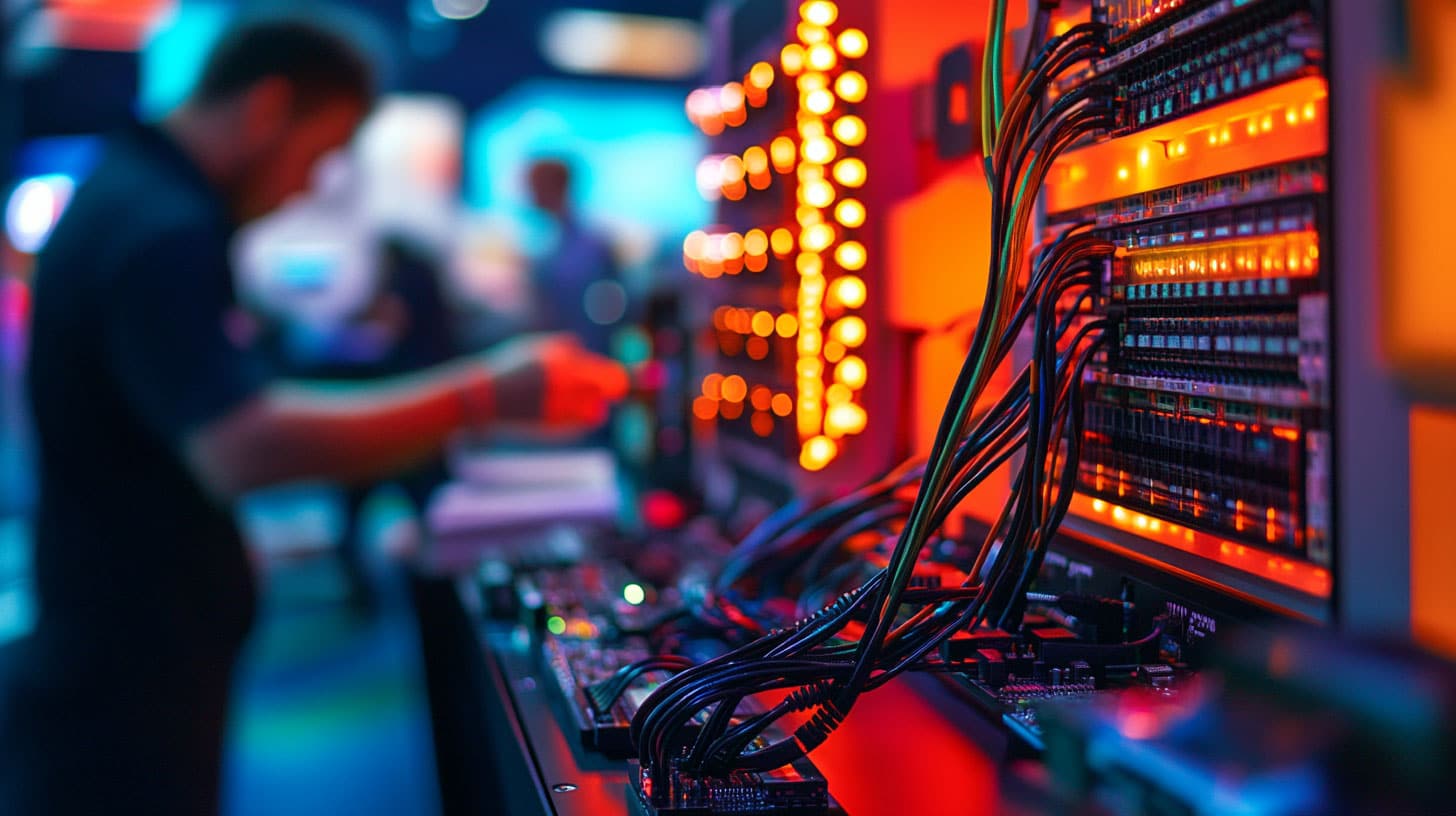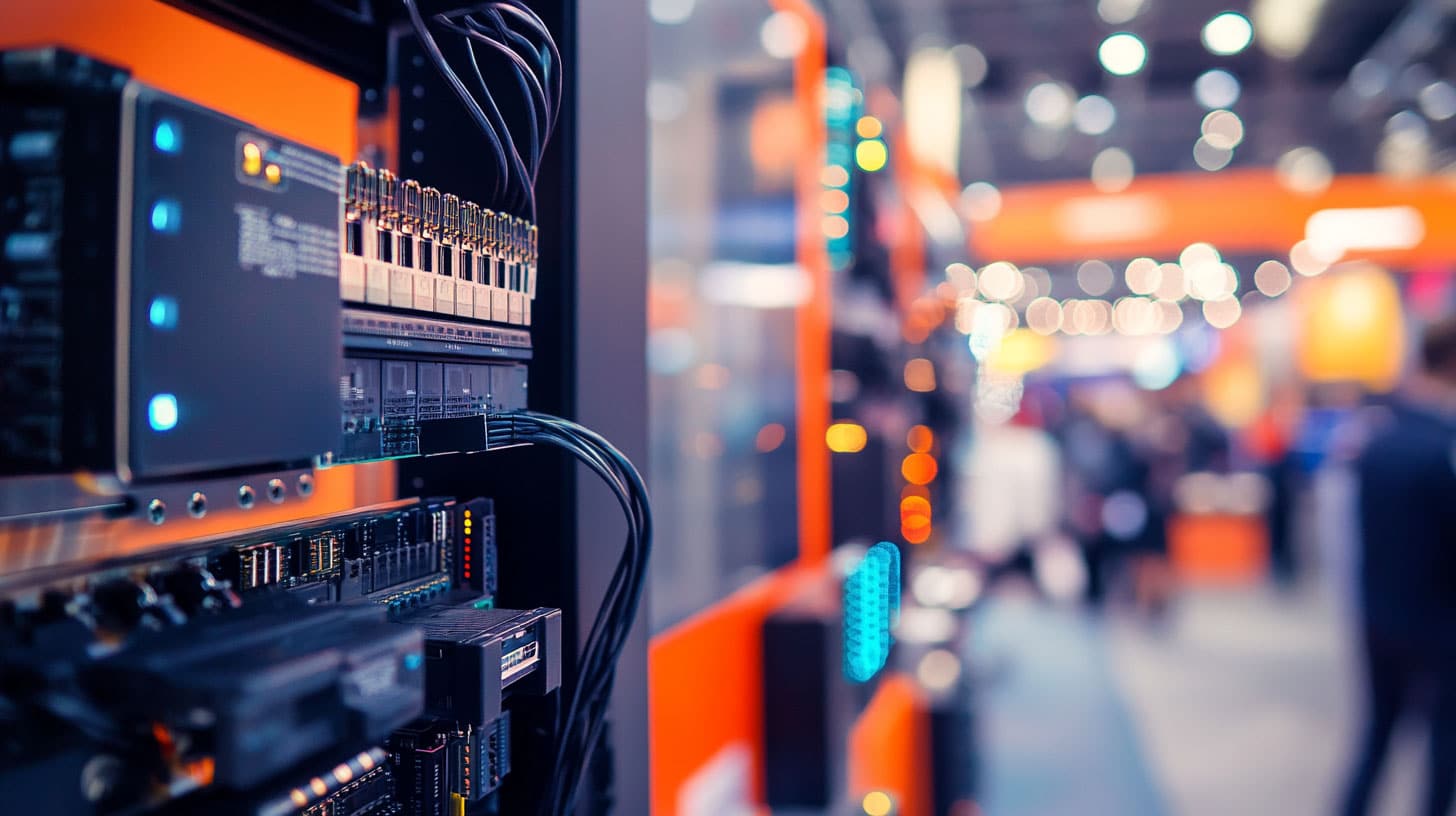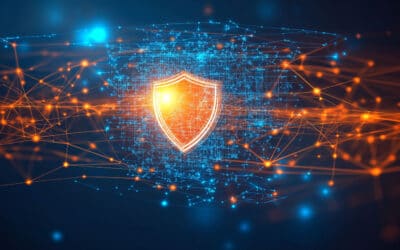How is the workflow organised before, during and after an event? Work in the software sector is highly individualised, how does this translate to the hardware sector?
It’s actually very similar to the software sector. Most of our customers come back again and again, even to the same trade fairs. Nevertheless, every trade fair is unique, even if it’s the same customer. This means that every year something new is added, something else is dropped, customers naturally always want to be up-to-date and present the latest products. Of course, this is also reflected in the equipment we provide. Depending on the size of an exhibition stand, we, of course, have to plan differently and take the customer’s requirements into account.
In this respect, we would like to advise the customer on the best possible expansion, but also take on board and implement their requirements. For a stand with ten employees, for example, a small network with a firewall, switch and access point for WiFi is sufficient. However, if there are around 3,000 employees on the stand, plus customers, you obviously have to go a bit bigger and then also ensure the redundancy behind it and offer a wide variety of hardware for the stand according to the size. Whether it’s a catering system with a receipt printer and handheld, as you’d find in any restaurant these days, or a simple printer that you want to use to quickly print something from your mobile phone because paper is still being used.
An important component is the information desk, which is the first point of contact for every visitor, with a telephone function so that the relevant employee can be reached. This is an important feature, especially on a full exhibition stand where it is easy to lose track of who is where. Depending on the customer stand and customer requirements, the hardware is selected accordingly, suggested or presented to the customer and then configured according to their wishes and security standards, but of course also our security requirements in accordance with ISO standards and the latest state of the art.
We have a so-called config area in our technical department where the configuration of the individual projects takes place. We affectionately call them Config-Us, they are always set up like a big U made of high tables. This is where we set up all the hardware that we are taking to the trade fair once before the fair and configure it, set it up, even segment by segment. If we have intermediate distributors, subsections or external rooms at trade fairs that we have to support, we set them up in exactly the same way so that it’s just plug and play on site. At this stage, the software also comes into play and is tested together with the hardware so that the interaction works smoothly. Be it the dialling technology, the automatic printing of badges at trade fairs… all these options, as well as catering systems or shop systems. It’s all customised, whether it’s software or hardware, there’s always something new and of course it all has to work together. That’s why we set it all up here to avoid sources of error at the trade fair.
On-site support is also something that I think our customers really appreciate, as we always have at least one technician on site at most of the larger stands to provide support, be it in the event of a power failure at the trade fair, a paper jam in the printer or just a simple question about a mobile phone feature or the usability of the app they have booked. What also happens very often are private questions that have nothing to do with our system, like: “Hey, I have a problem with my iPhone.”.
We don’t mind taking a look at those types of things, at all. We are always on site, always ready, always approachable, always present, but we stay in the background because we naturally don’t want to disrupt the flow of the trade fair. We usually have a technical room where we set up a workstation, where we often prepare and plan for the next trade fairs already, sometimes with our customers on site at the stand. The stand management often gives us direct feedback in such meetings: what went well, what can we optimise next time, where can we start and create new ideas that we can then incorporate and prepare for the next trade fair appearance.
Follow-up is also becoming increasingly important and time-consuming for us and has the same importance as preparation. Due to all the data protection regulations and IT security templates, the workload has become very high, but of course it has to be processed properly and very carefully. For example, we have to document how and when which product was reset and cleaned up by whom and when data was deleted. In order to carry out these measures, we set up each project again in the company after the trade fair. After the follow-up, the items are handed over to our warehouse manager, who ensures that the devices have not been damaged externally and documents the inventory.






